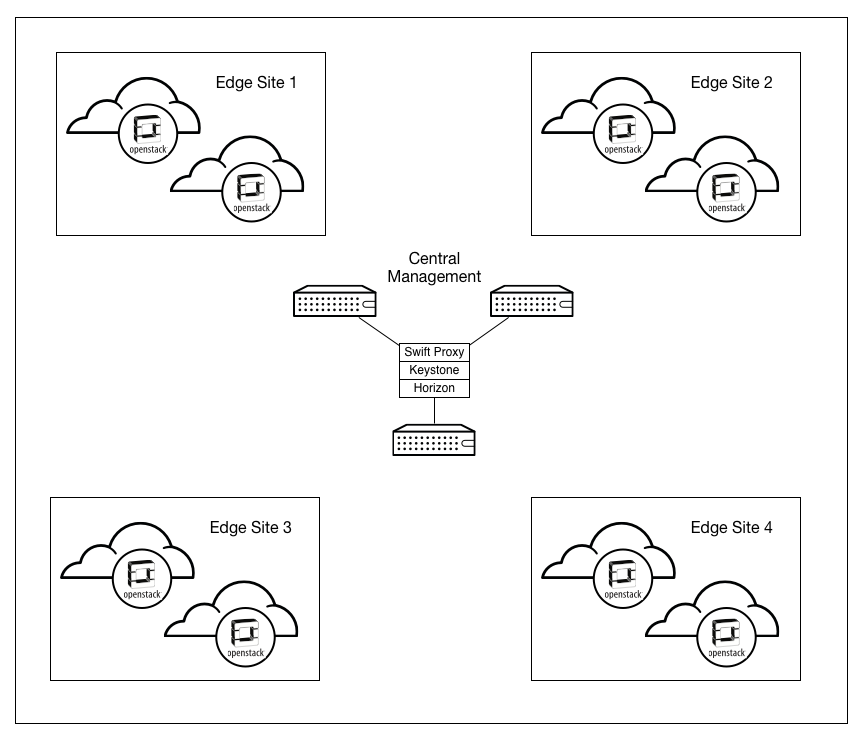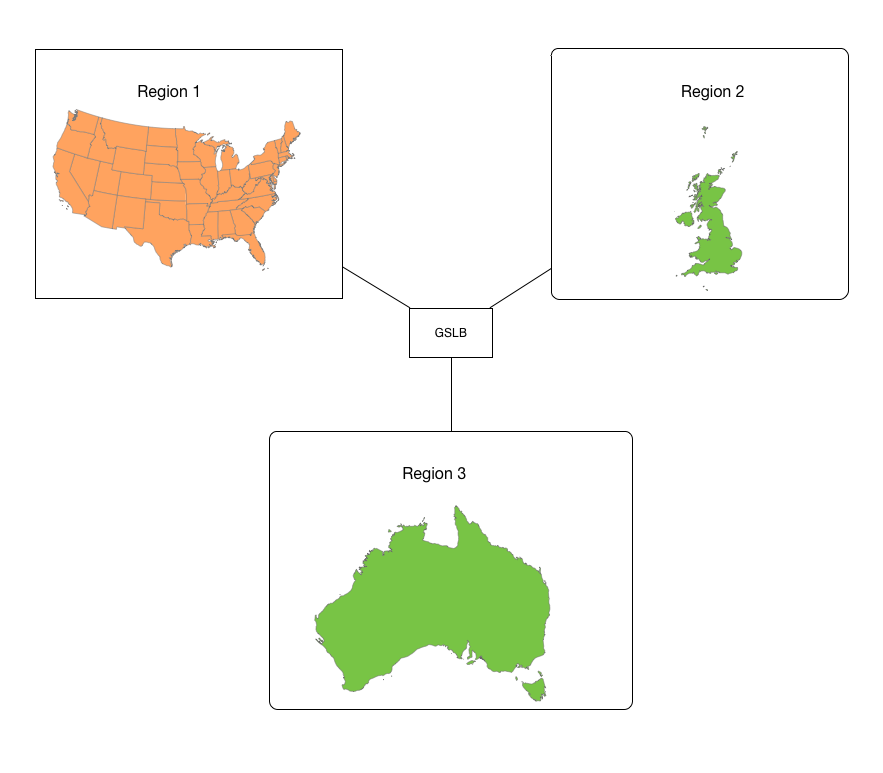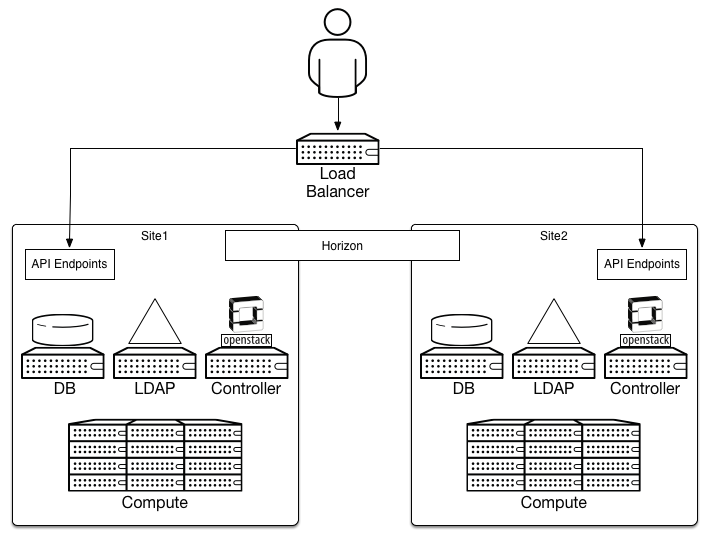9.1 KiB
Prescriptive examples
There are multiple ways to build a multi-site OpenStack installation, based on the needs of the intended workloads. Below are example architectures based on different requirements. These examples are meant as a reference, and not a hard and fast rule for deployments. Use the previous sections of this chapter to assist in selecting specific components and implementations based on specific needs.
A large content provider needs to deliver content to customers that are geographically dispersed. The workload is very sensitive to latency and needs a rapid response to end-users. After reviewing the user, technical and operational considerations, it is determined beneficial to build a number of regions local to the customer's edge. Rather than build a few large, centralized data centers, the intent of the architecture is to provide a pair of small data centers in locations that are closer to the customer. In this use case, spreading applications out allows for different horizontal scaling than a traditional compute workload scale. The intent is to scale by creating more copies of the application in closer proximity to the users that need it most, in order to ensure faster response time to user requests. This provider deploys two datacenters at each of the four chosen regions. The implications of this design are based around the method of placing copies of resources in each of the remote regions. Swift objects, Glance images, and block storage need to be manually replicated into each region. This may be beneficial for some systems, such as the case of content service, where only some of the content needs to exist in some but not all regions. A centralized Keystone is recommended to ensure authentication and that access to the API endpoints is easily manageable.
It is recommended that you install an automated DNS system such as Designate. Application administrators need a way to manage the mapping of which application copy exists in each region and how to reach it, unless an external Dynamic DNS system is available. Designate assists by making the process automatic and by populating the records in the each region's zone.
Telemetry for each region is also deployed, as each region may grow differently or be used at a different rate. Ceilometer collects each region's meters from each of the controllers and report them back to a central location. This is useful both to the end user and the administrator of the OpenStack environment. The end user will find this method useful, as it makes possible to determine if certain locations are experiencing higher load than others, and take appropriate action. Administrators also benefit by possibly being able to forecast growth per region, rather than expanding the capacity of all regions simultaneously, therefore maximizing the cost-effectiveness of the multi-site design.
One of the key decisions of running this infrastructure is whether or not to provide a redundancy model. Two types of redundancy and high availability models in this configuration can be implemented. The first type is the availability of central OpenStack components. Keystone can be made highly available in three central data centers that host the centralized OpenStack components. This prevents a loss of any one of the regions causing an outage in service. It also has the added benefit of being able to run a central storage repository as a primary cache for distributing content to each of the regions.
The second redundancy type is the edge data center itself. A second data center in each of the edge regional locations house a second region near the first region. This ensures that the application does not suffer degraded performance in terms of latency and availability.
ms-customer-edge
depicts the solution designed to have both a centralized set of core
data centers for OpenStack services and paired edge data centers:
Geo-redundant load balancing
A large-scale web application has been designed with cloud principles in mind. The application is designed provide service to application store, on a 24/7 basis. The company has typical two tier architecture with a web front-end servicing the customer requests, and a NoSQL database back end storing the information.
As of late there has been several outages in number of major public cloud providers due to applications running out of a single geographical location. The design therefore should mitigate the chance of a single site causing an outage for their business.
The solution would consist of the following OpenStack components:
- A firewall, switches and load balancers on the public facing network connections.
- OpenStack Controller services running, Networking, dashboard, Block Storage and Compute running locally in each of the three regions. Identity service, Orchestration service, Telemetry service, Image service and Object Storage service can be installed centrally, with nodes in each of the region providing a redundant OpenStack Controller plane throughout the globe.
- OpenStack compute nodes running the KVM hypervisor.
- OpenStack Object Storage for serving static objects such as images can be used to ensure that all images are standardized across all the regions, and replicated on a regular basis.
- A distributed DNS service available to all regions that allows for dynamic update of DNS records of deployed instances.
- A geo-redundant load balancing service can be used to service the requests from the customers based on their origin.
An autoscaling heat template can be used to deploy the application in the three regions. This template includes:
- Web Servers, running Apache.
- Appropriate
user_datato populate the central DNS servers upon instance launch. - Appropriate Telemetry alarms that maintain state of the application and allow for handling of region or instance failure.
Another autoscaling Heat template can be used to deploy a distributed MongoDB shard over the three locations, with the option of storing required data on a globally available swift container. According to the usage and load on the database server, additional shards can be provisioned according to the thresholds defined in Telemetry.
Two data centers would have been sufficient had the requirements been met. But three regions are selected here to avoid abnormal load on a single region in the event of a failure.
Orchestration is used because of the built-in functionality of autoscaling and auto healing in the event of increased load. Additional configuration management tools, such as Puppet or Chef could also have been used in this scenario, but were not chosen since Orchestration had the appropriate built-in hooks into the OpenStack cloud, whereas the other tools were external and not native to OpenStack. In addition, external tools were not needed since this deployment scenario was straight forward.
OpenStack Object Storage is used here to serve as a back end for the Image service since it is the most suitable solution for a globally distributed storage solution with its own replication mechanism. Home grown solutions could also have been used including the handling of replication, but were not chosen, because Object Storage is already an intricate part of the infrastructure and a proven solution.
An external load balancing service was used and not the LBaaS in OpenStack because the solution in OpenStack is not redundant and does not have any awareness of geo location.
Location-local service
A common use for multi-site OpenStack deployment is creating a Content Delivery Network. An application that uses a location-local architecture requires low network latency and proximity to the user to provide an optimal user experience and reduce the cost of bandwidth and transit. The content resides on sites closer to the customer, instead of a centralized content store that requires utilizing higher cost cross-country links.
This architecture includes a geo-location component that places user requests to the closest possible node. In this scenario, 100% redundancy of content across every site is a goal rather than a requirement, with the intent to maximize the amount of content available within a minimum number of network hops for end users. Despite these differences, the storage replication configuration has significant overlap with that of a geo-redundant load balancing use case.
In ms-shared-keystone, the application utilizing this
multi-site OpenStack install that is location-aware would launch web
server or content serving instances on the compute cluster in each site.
Requests from clients are first sent to a global services load balancer
that determines the location of the client, then routes the request to
the closest OpenStack site where the application completes the
request.


